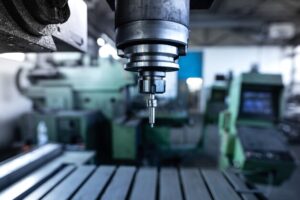Catalog
Tags
10 Common CNC Machining Design Mistakes—and How to Avoid Them

TL;DR: The most frequent CNC machining design errors include inadequate wall thickness, ignoring tool accessibility, poor hole depth ratios, and improper material selection. By understanding these pitfalls and implementing preventive measures, designers can significantly improve manufacturability, reduce costs, and accelerate production timelines.
How CNC Design Mistakes Impact Production
CNC machining requires precise design considerations that account for physical machining limitations. Unlike 3D printing or injection molding, CNC tools have specific size constraints, cutting angles, and material removal requirements that directly influence design feasibility. Common mistakes often stem from treating CNC like additive manufacturing or failing to consider the subtractive nature of the process.
Critical Design Factors by Category
| Category | Common Mistakes | Optimal Parameters |
| Wall Thickness | Too thin walls causing vibration | ≥0.8mm (metals), ≥1.5mm (plastics) |
| Hole Design | Excessive depth-to-diameter ratio | ≤4:1 (standard), ≤10:1 (with tooling) |
| Corner Radii | Sharp internal corners | ≥1/3× tool diameter |
| Surface Finish | Unnecessary high precision | Specify only critical surfaces |
| Material Choice | Ignoring machinability ratings | 6061 aluminum (best), 304 SS (harder) |
- Avoid: Undercuts without proper tool access
- Prevent: Thin floors beneath cavities
- Optimize: Thread length (2× diameter max)
- Remember: Standard drill sizes reduce cost
Benefits of Proper CNC Design
Correctly designed CNC parts achieve 30-50% faster machining times and 20% lower material waste according to industry studies. Aerospace leader Boeing reduced prototyping costs by 37% after implementing CNC design guidelines across their engineering teams. Medical device companies particularly benefit from optimized designs when machining titanium implants.
Real-World Implementation
Tesla’s CNC optimization for battery cooling plates:
- Reduced complex internal channels from 12 machining operations to 5
- Increased wall thickness from 0.5mm to 1.2mm for stability
- Standardized all corner radii to 2mm for tool consistency
FAQ: CNC Design Challenges
- Q: How thin can aluminum walls be?
A: 0.5mm absolute minimum, but 1mm+ recommended for reliability - Q: Can CNC machines create true 90° internal corners?
A: No—all end mills leave slight radii (use EDM for sharp corners) - Q: What’s the most cost-effective surface finish?
A: As-machined (Ra 3.2μm) unless cosmetic/functional needs require better
Ready to Optimize Your Designs?
Download our free CNC Design Checklist or consult with our machining experts for a design review before production. Proper planning prevents 80% of common machining issues—invest 15 minutes today to save weeks later.
By addressing these ten frequent mistakes early in the design phase, engineers can create parts that are not only manufacturable but optimized for cost, quality, and lead time. Remember—CNC machining rewards designs that respect the physics of material removal.
🚀 Let’s Build Precision Together
When quality, speed, and reliability matter, Ruixin Mold is your trusted CNC machining partner. No matter how complex your part design is, we can deliver components that meet the strictest standards.
👉 Contact us today to discuss your CNC machining needs or request a quote.
Let’s turn your ideas into reality—with precision that performs.
Need Precision CNC Machining for Your Mold Components?
We specialize in custom CNC machining of mold inserts, slide cores, ejector plates, mold bases, and lifters
all made to your exact drawings and specifications.
👉 Let’s Build Your Next Project Together!
Tell us your needs and upload your drawings — we’ll get back within 24 hours.




